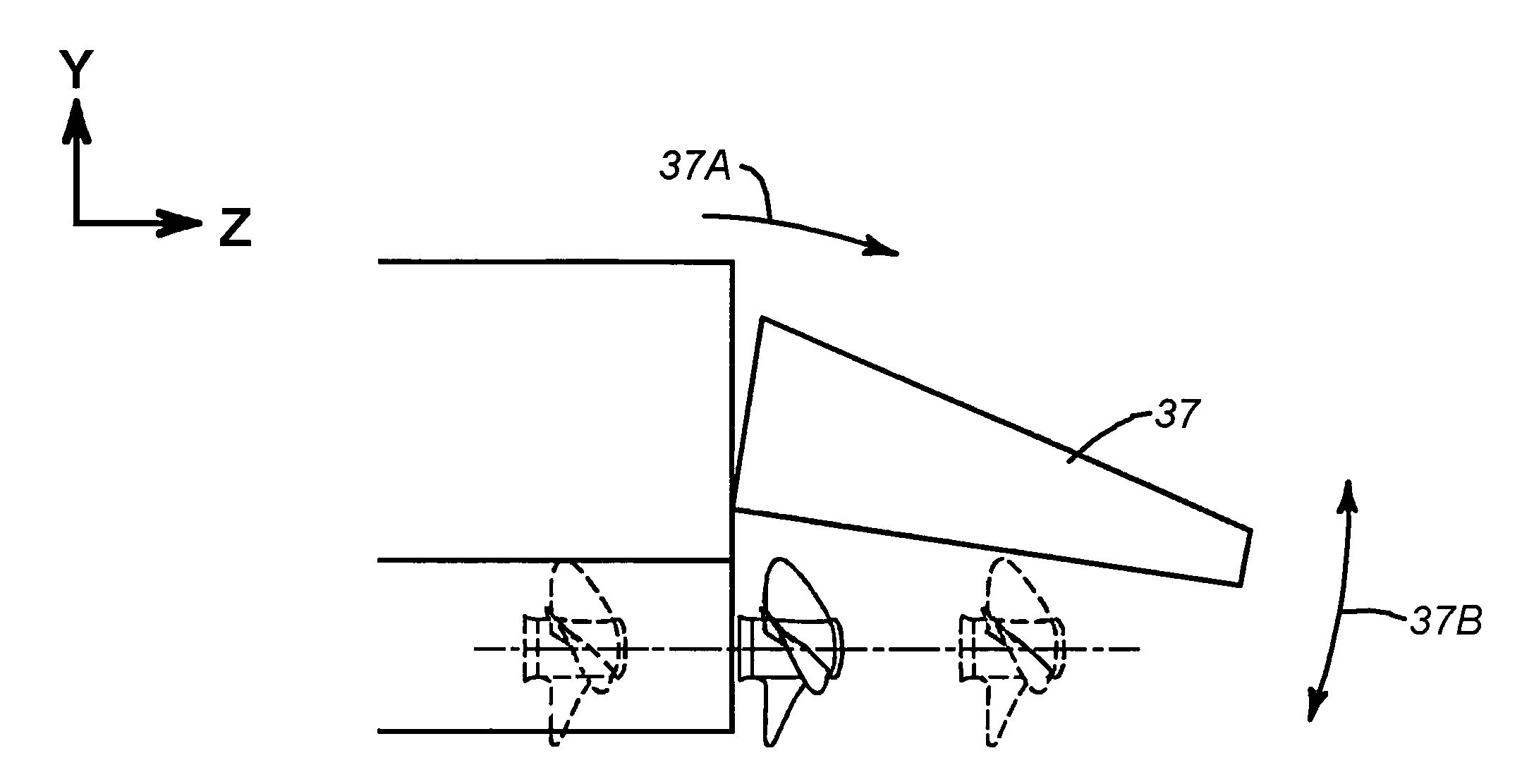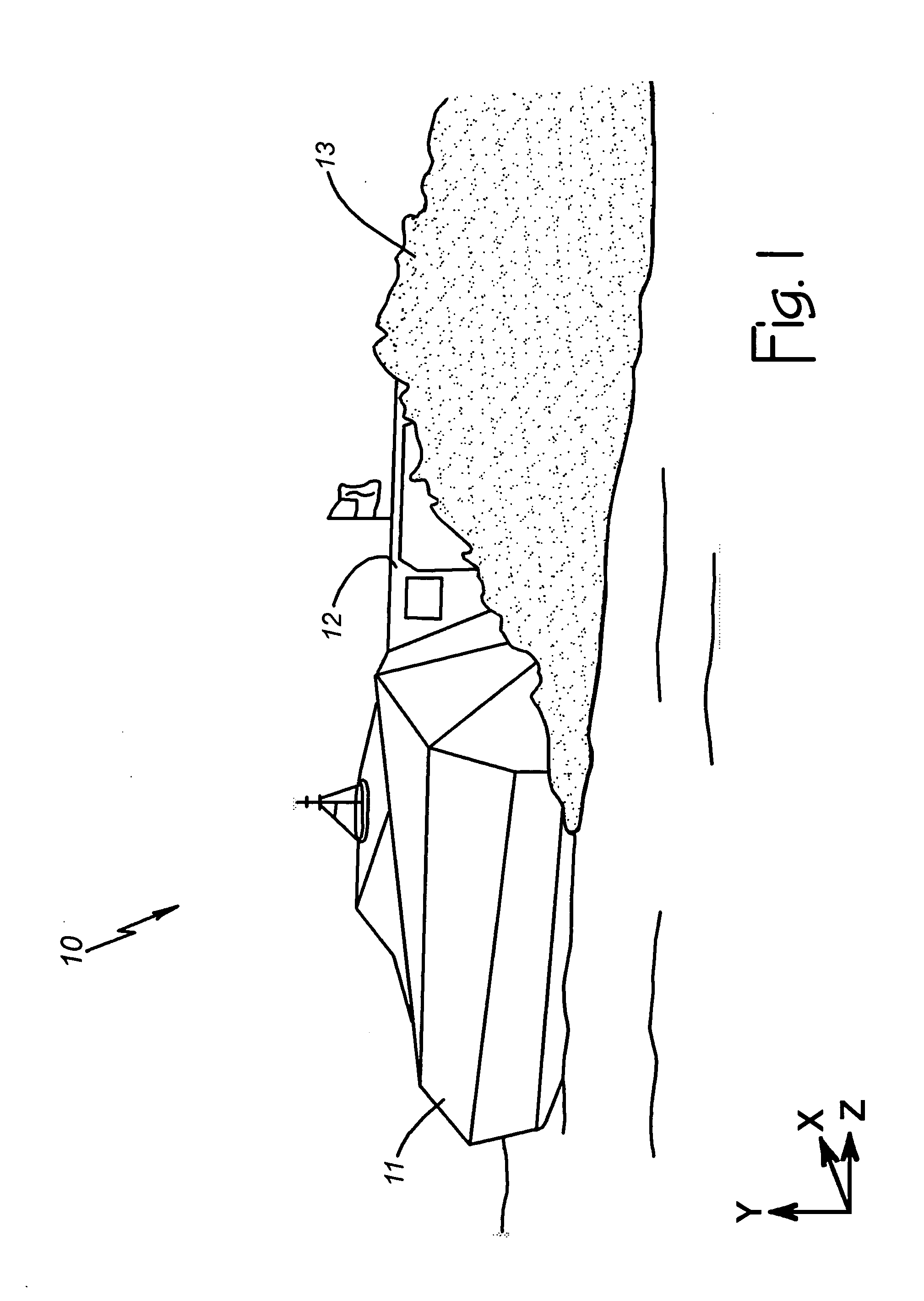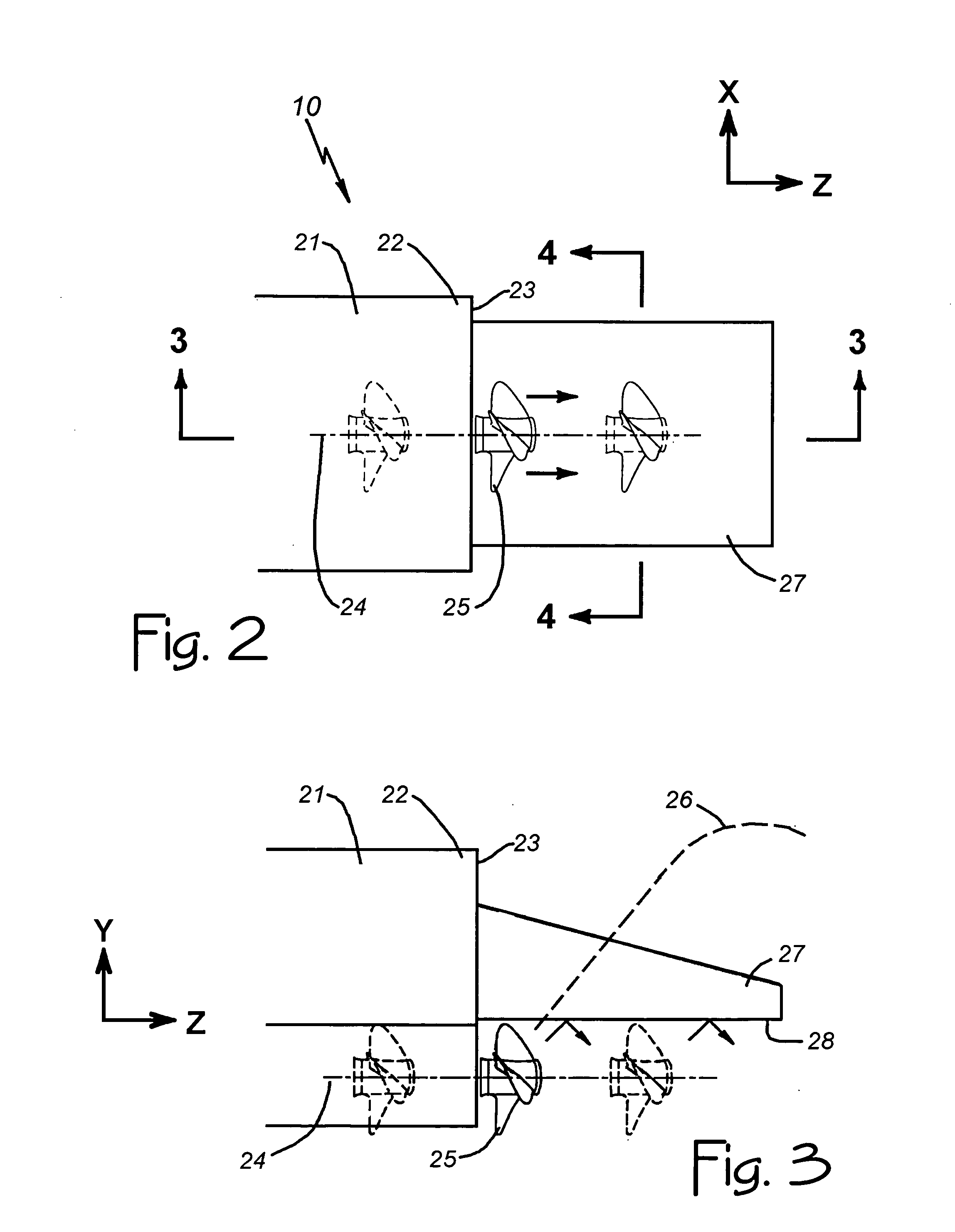Powerboat rooster tail depressor
a technology of rooster tail and depressor, which is applied in the direction of marine propulsion, special-purpose vessels, vessel construction, etc., can solve the problems of increasing the size exposing military vessels to the enemy, and becoming quite large, so as to reduce the radar signature of the rooster tail and increase the efficiency of the powerboa
- Summary
- Abstract
- Description
- Claims
- Application Information
AI Technical Summary
Benefits of technology
Problems solved by technology
Method used
Image
Examples
second embodiment
[0025]FIG. 4a is a diagrammatic elevation view of a canopy 32 on the invention. The canopy 32 is faceted in the sense that it includes a downwardly facing surface 32A having a cross sectional shape in a vertical transverse plane parallel to the X-Y axis that is not continuously curved; it includes multiple line segments or chords instead.
third embodiment
[0026]FIG. 4b is a diagrammatic elevation view of a canopy 33 on the invention. The canopy 33 is curved in the sense that it includes a downwardly facing surface 33A having a cross sectional shape in a vertical transverse plane parallel to the X-Y axis that is continuously curved. The shapes of the canopy 32 and the canopy 33 are functions of the propeller size, number, and location. Other considerations affecting their shapes include construction material and attachment design.
fourth embodiment
[0027]FIG. 5 is a diagrammatic elevation view of the invention having a canopy 34 with a downwardly facing surface 34A that includes lift-to-drag ratio enhancement steps. The steps are designed to promote separation of the redirected rooster tail from the RTD as soon as possible. That is done to reduce wetted surface area and viscous drag. The steps also convert any forward motion of the propeller wake into thrust.
PUM
 Login to view more
Login to view more Abstract
Description
Claims
Application Information
 Login to view more
Login to view more - R&D Engineer
- R&D Manager
- IP Professional
- Industry Leading Data Capabilities
- Powerful AI technology
- Patent DNA Extraction
Browse by: Latest US Patents, China's latest patents, Technical Efficacy Thesaurus, Application Domain, Technology Topic.
© 2024 PatSnap. All rights reserved.Legal|Privacy policy|Modern Slavery Act Transparency Statement|Sitemap



